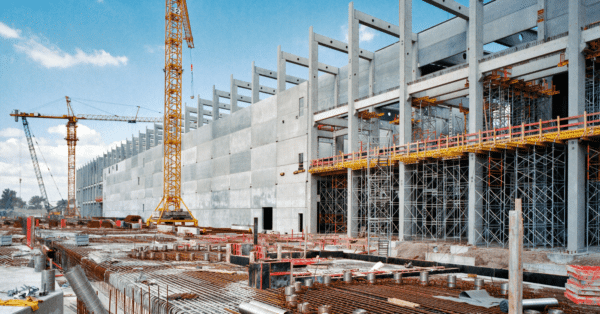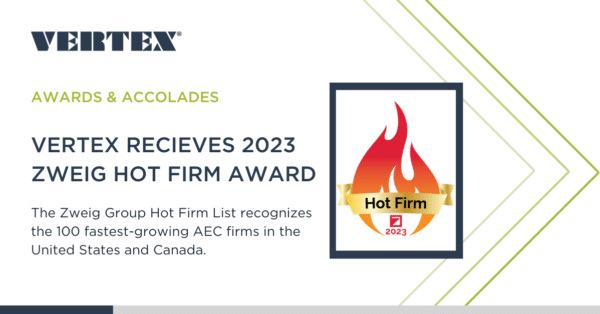When people think about design, construction, and real estate, “innovative” and “forward-thinking” probably aren’t the first words that come to mind.
Many building industry professionals working today began their careers at a time when computers were not commonplace. All communication was in person or over the phone and paper was the primary medium for documentation.
In just a few decades, technology has dramatically changed how we design and build things. Email, virtual meetings, text messaging, and social media have augmented how we communicate with our teams. Seemingly endless and ever-expanding streams of 1s and 0s define the project record.
While in-person meetings, phone calls, and paper records are still important, they represent only part of the process.
Now that technology has become so intertwined with the built environment, let’s take a look at some of the trends that we can soon expect to change the way we work.
1. Prefabrication & Offsite Construction
Ask any contractor and you’ll hear that the number one issue impacting our industry right now is the lack of skilled labor. With the decades-long shift of K-12 and higher education away from vocational instruction, there simply is not enough supply to meet the current and future demands for building trades. Leading contractors like Summertown Construction are now focusing on expanding the prefabrication of building components and offsite construction.
Why it matters: Perhaps the biggest benefit to offsite and prefab construction is establishing a controlled environment. Greater consistency, combined with automation concepts from the manufacturing industry, means better quality at a lower price, and on a much more predictable timeline.
2. Here Come the Robots
Not everything can be fabricated offsite. But some work is so repetitive, labor-intensive, and prone to accidents, there has to be a better way, right? Robotic bricklayers are now a reality, and they can be faster and more cost-effective than human labor. There are arguably a number of trades that could potentially be better performed by robots.
Why it matters: The construction industry, despite all the technological improvements over the years, remains one of the most dangerous career options. As an industry, we need to be doing more to prevent injury and death, as well as reduce already high insurance premiums. That doesn’t negate the value of experience, however — someone has to program the robots!
3. Health & Wellness
No, I’m not talking about stocking job sites with treadmills and yoga mats. While improving the health and safety of our workers is important, we also need to consider the impact that our built environment has on the health of the occupants of these structures. There has been a significant amount of peer-reviewed research in recent years documenting the relationship between how buildings are designed, constructed, operated, and maintained with quantifiable metrics, such as increased worker productivity, lower healthcare costs, and decreased absenteeism, as well as numerous subjective measures.
Why it matters: When buildings are improperly designed and constructed, we know that there can be serious negative impacts on occupant health. Besides mold and life-safety considerations, we are learning more how various chemicals used in building components affect us. As an example, Legionella, which causes Legionnaire’s Disease, can be a direct result of improperly maintained HVAC equipment.
4. Internet of Things (IoT)
The so-called “Internet of Things” is simply the addition of network connectivity to everyday objects. There are numerous applications for this technology within the built environment, from wearable tech that can monitor worker productivity and health, to tools that never (or at least are less likely to) disappear, to sensors in various components that provide continuous monitoring and control capabilities for nearly every building system.
Why it matters: Imagine receiving an alert that your fancy green roof has a leak, with a report that pinpoints its exact location. Or having your workers feel vibrations in their connected steel-toed boots as they step closer to the red zone where a potential fall might occur. Or being able to automate the process of increasing artificial lighting, lowering shades, and decreasing HVAC loads as the exterior glazing system detects decreased sunlight exposure on a room-by-room basis. The possibilities are nearly endless.
5. Virtual Reality (VR)
For many years, Virtual Reality has been transforming how we design buildings and imagine future spaces. (When I served on the internal project team at Pfizer, we used a VR fly-through of our future R&D campus to sell our top brass on the project — and that was over 15 years ago!) The next big trend is the virtual construction of new buildings, which will allow us to better strategize the sequencing of various trades and components and to visualize their relationships to one another.
Why it matters: As building systems become more complicated, the more important it becomes to apply the time-tested approach of “Measure Twice, Cut Once.” Take rebar for reinforcing concrete, for example. Oftentimes, the structural requirements of rebar make it difficult to actually assemble as designed without resulting in something called congestion, which is exactly what it sounds like. With VR, complicated assemblies can be constructed in a virtual environment without the risk and cost of an actual mock-up.
6. Augmented Reality
Whereas Virtual Reality presents a completely synthetic environment to the user, Augmented Reality (also sometimes called “mixed reality”) presents virtual elements within the context of the user’s real-world environment. One of the first applications of this concept was the Heads-Up Display (HUD) first used by advanced fighter jets in the late-20th century, which showed pilots graphical information layered on top of the view from the cockpit. A collaboration between Microsoft Hololens and Trimble produced a hard hat that looks a lot like a fighter pilot’s helmet, showing users a holographic rendering of the 3D Building Information Model (BIM) on top of whatever part of the building they are currently looking at.
Why it matters: In my opinion, this really is the “killer app” for facilities management when it comes to leveraging the rich information contained in as-built drawings. A user could be presented with a simulation of an X-Ray image of the existing building to identify concealed components and systems. This would certainly make inspections a lot easier for us folks involved in the forensics end of things as well.
7. Drones (with Lasers)
The use of drones in construction is virtually mainstream at this point. On the one hand, aerial photographs and video are great marketing tools and an effective way to quickly and easily inspect parts of a project site. But newer technologies are greatly enhancing the utility of these devices that were once considered little more than “toys.” For example, when LIDAR (Light Detection and Ranging), which uses lasers to capture measurements, is attached to a drone, the process of surveying is made much faster and much more accurate.
Why it matters: This technology is relatively cost-effective, highly accurate, and noninvasive. We predict more organizations will embrace this approach as a way to ensure greater transparency on their projects and to help avoid potential disputes. As an example, during a recent webinar, Hensel Phelps announced they have adopted a similar practice on their jobs. Plus, if drones are cool, and lasers are cool, drones with lasers must be really cool.
8. 3D Printing
3D Printing is another technology that first took off with hobbyists, but that is now finding some serious real-world applications. This is happening on both the small scale, as a way to rapidly prototype various components and test out design models, as well as on the large scale—as in full-size buildings. Several companies have now produced complete buildings in which the primary structure was 3D printed. In Europe, there is talk of an entire residential development that will be 3D printed at just a fraction of the cost of conventional methods.
Why it matters: Originally, 3D printers primarily used plastic as a medium for producing objects. Recent advancements mean that now more conventional materials, such as various metals and even reinforced concrete, can be used to create just about anything that you can envision in a 3D space. In fact, 3D printing is being proposed as the most likely option for creating structures on the moon or Mars by the first wave of intrepid colonists.
9. Artificial Intelligence (AI) & Machine Learning
Of all the technologies that will likely impact the built environment, it is the rapid advancements in artificial intelligence that present the biggest opportunity—as well as risk. Machine Learning is a subset of AI that automates the process of analyzing large amounts of data. The biggest challenge we face in our industry is how to make sense and derive useful meaning from the mountains of data that are now being produced. By teaching computers how to process information automatically, AI and Machine Learning represent the most promising tools for pulling together all of the technologies listed above.
Why it matters: AI will dramatically shape how we understand everything about what we do in the built environment. Insurance companies are already leveraging AI to analyze policy language, correlated with loss data, to predict which projects involving which parties are likely to end in a claim. By listening for certain keywords, not unlike how Siri or Alexa function, AI-enabled devices will either bring us into a new world of enlightenment and prosperity or hasten the downfall of humanity, depending on how much credence you give to science fiction.
Conclusion on Upcoming Construction Technology
It is indeed a Brave New World on the horizon. Whether we like it or not, in just a few years, the design, construction, and real estate industries will look nothing like they did just a few years ago. Or even today.
The question we must ask is: How will our industry respond to the risks and opportunities presented?
This article was originally published by Xpera Group which is now part of The Vertex Companies, LLC.








